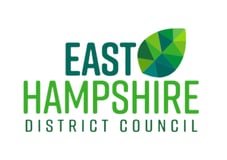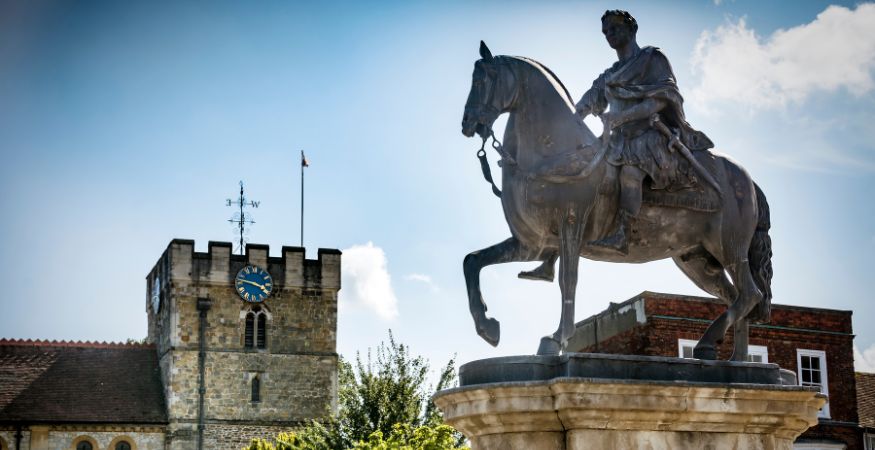| Read time: 6 mins
 East Hampshire District Council serves a local population of over 120,000 and operates five cemeteries - the oldest of which was opened over a century-and-a-half ago.
East Hampshire District Council serves a local population of over 120,000 and operates five cemeteries - the oldest of which was opened over a century-and-a-half ago.
Frank Swift has been Senior Cemeteries Officer at East Hants for a year and a half, bringing over 20 years of funeral business experience with him.
We spoke to Frank about the Council’s need for a digital management solution, and why a relative lack of IT experience has been little impediment with a system that is easy to use.
You had a varied career before joining East Hants - what did this new role require, and what were some of the challenges you initially faced?
The role required someone with a funeral background, which of course I had - someone who was customer-focused and had the ability to talk to people.
A lot of the role requires dealing with families - both face to face and on the phone. Being able to say the right things to customers in the right way means empathy, which was something I learned from being in the funeral business.
That said, even with my background in bereavement services, there was still a lot to learn.
Some of that was around regulations and legalities, but within the first 3 months, and having attended a number of courses run by the ICCM, I felt up to speed.
Once something clicks, it stays with you.
How did you find PlotBox, being the first system of its kind you had used?
Everything was fine as far as PlotBox was concerned - the system itself is absolutely great.
Prior to working in the funeral business, I was a trainer - [and so] something is either right or wrong, there are no grey areas.
PlotBox made sense to me in that regard. It was easy to use.
How did the implementation of PlotBox relate to the broader objectives of the council?
We aim to go paperless, and PlotBox’s digital solution will be a great help towards that goal - for example, creating work orders for our grave diggers, which is important.
I’m also starting to learn more about how it will help me to manage our memorials, so that will also become beneficial as we move forward.
What does cemetery management look like for you on a daily basis?
We have five quite large cemeteries to manage within our area, all of which I have responsibility for.
We have a very small team, with just myself and a colleague that covers the basics in my absence.
That person must understand the basic functions of the role - how to take a funeral booking and put it onto PlotBox, and from there, the related information to be captured, such as deceased name, the cemetery, times, dates and so on - all of which is easy to do from within PlotBox.
I deal with all of the burials, the details of which are taken from funeral directors; with ashes, I can deal directly with the public - either sending out interment forms, selling them a grave, or reopening an existing ashes plot.
So, it’s a mix of working both with funeral directors and families.
Many of the funeral directors know me from my previous roles, which makes it easier - I speak their language and understand their problems.
That shorthand becomes useful in ensuring we have all the information we need to carry out burials in good time - such as having coffin sizes to the gravediggers at least a week in advance, so they can have graves prepped and ready.
That’s especially important, as we currently have one grave digger covering all five cemeteries.
So, logistics play a large part, as well as rules we have established - such as two hours between funerals. That allows for movement between cemeteries, as well as sufficient time for areas to be cleared and graves backfilled, all while giving mourners sufficient time at the graveside.
We’re starting to educate funeral directors on taking the lead on that, in order that families have the time they need, while allowing the logistical elements to happen as smoothly as possible.
Where do cemetery regulations come into play?
We have our regulations governing all of our cemeteries, one of which is that headstones must be removed before a reopen - that can sometimes pose a challenge, depending on how the original headstone was placed.
In terms of memorials, we test those every five years and I know that PlotBox will be able to help with the administration of those processes.
What was the need then for a new cemetery management system?
As mentioned, we are moving towards paperless processes in the council.
The previous system included a book of maps for each of the cemeteries. Now we have the GIS mapping [with the digital maps] on the system - reconciling those with the paper maps will enable me to move away from the books altogether.
PlotBox’s drone mapping will also continue to be useful for optimizing our cemetery space.
One of our cemeteries is almost full, and we have now cultivated an old ‘spoils’ area.
We’re using the drones to map out 60 additional graves, and should be ready to place those back into live inventory this summer.
That’s gone well and didn’t cost a great deal to get right.
Please describe your learning process.
Like any new system, it was a little challenging to start with, but the support was always there. The chat function within PlotBox itself was a real help - particularly in the early days.
Since then, I've been assigned my own Customer Success Manager, who is my direct contact, and that has been invaluable.
They are a great support - they’re able to answer any questions I have, and for anything new I have planned - memorial management, for example, it’s been great.
I have also found the PlotBox user guides very helpful, and when the time comes for someone new to come on board - which I know can be daunting - it will be an invaluable resource for them.
That said, using PlotBox every day means that you soon come away from the user guides.
PlotBox is very easy to use and very user-friendly. It knows what it needs - if you miss some little detail, it will tell you.
For example, there are particular pieces of information in certain sections that must be entered before it will allow you to progress - that way, nothing is overlooked.
There is potential for a lot of mistakes to be made in this job. Let's face it, the worst thing I can do is to place someone in the wrong plot. Having real time data on exactly what’s available where, along with the status of each plot (which have partial remains, and so forth) makes something like that very difficult to do.
Aside from mitigating risk, what other benefits has PlotBox brought about in practice?
It has been particularly useful in capturing all of the details required for our daily operations - all details of the deceased, grave type, deed owners, etc., along with the relevant scanned documentation.
Once that is all in there, it’s in there for good.
I regularly have inquiries from families about all manner of things, for example, people wanting to know where a grave is, and when a burial took place. Having that information all linked together and easily accessible, makes that process much easier.
Another benefit is the fact that records for all five cemeteries are held within one system - that means if I get a query relating to a particular location, I can just enter the name and it will search through all facilities to provide the information I need straight away.
The digital cemetery maps have been very useful in locating grave sites where little information has been given by the family member - for example, I can zoom in to see who is buried to the left or the right of a particular site, so they can see exactly where a grave is - I can then print that off and give it to them.
So that’s been a useful tool.
On a similar note, on every burial order I can now attach a map showing exactly where the correct location is, with section, row and plot numbers, which again, helps to minimize any chance of the wrong grave being prepared.
Another good thing about PlotBox is that, if funeral directors come on board in the right way, I can actually get two weeks ahead - so if I wanted to book funerals ahead of time and get ready to go with all of the information I need, I can now do that.
You mentioned earlier how easy PlotBox was to use. Can you elaborate on that?
I’m in my sixties, and while I have used IT in previous roles, technology has come on in leaps and bounds.
So, when coming across PlotBox for the first time - this single system - there was some initial nervousness. But as mentioned, I had all of the PlotBox user guides with me, which was a great help.
Then onto things such as burial renewals, deeds etc. - with PlotBox, that’s all easy to manage. With deeds running out for example, I can easily run a report covering a specific date range, enabling us to send out the five-yearly reminder letters that we send out every month.
In terms of the user interface, it's easy for me to find what I’m looking for.
For example, when I needed to change all of our prices, I initially thought it was going to be quite complicated - in fact, all I needed to do was go into settings, and from there it was quite clear.
What has the support you’ve received from PlotBox been like?
It’s been really nice to have a single dedicated person that looks after our account. Any questions I have, they can either answer them, or if they don’t have the answer, they can ask another department. As mentioned, we will be looking at memorials together soon, which will allow me to get rid of another set of paper processes.
What has your overall experience of the PlotBox solution been like?
Being a very organised person, PlotBox has been ideal for me, and it's a valuable tool.
It helps minimise mistakes - it does what it says on tin.
It’s a very good system.
Discover the benefits of digital transformation. Download the eBook:

